Price Prediction API: Model Moon/Base/Bear Scenarios in Minutes
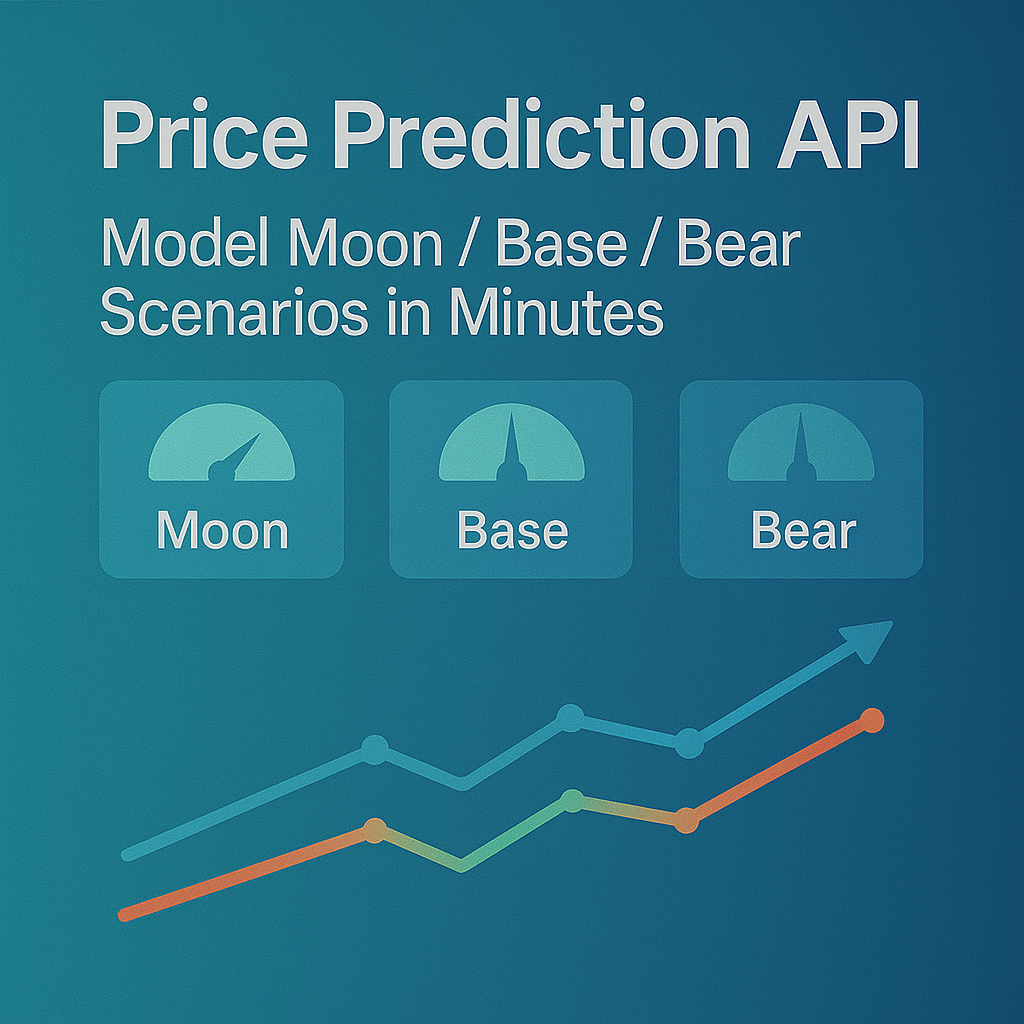
Every trader wonders: how high could this token really go? The price prediction API from Token Metrics lets you explore Moon, Base, and Bear scenarios for any asset—grounded in market-cap assumptions like $2T, $8T, $16T and beyond. In this guide, you’ll call /v2/price-prediction, render scenario bands (with editable caps), and ship a planning feature your users will bookmark. Start by creating a key at Get API Key, then Run Hello-TM and Clone a Template to go live fast.
What You’ll Build in 2 Minutes
- A minimal script that fetches Price Predictions via /v2/price-prediction for any symbol (e.g., BTC, SUI).
- A simple UI pattern showing Moon / Base / Bear ranges and underlying market-cap scenarios.
- Optional one-liner curl to smoke-test your API key.
- Endpoints to add next: /v2/tm-grade (quality context), /v2/trading-signals / /v2/hourly-trading-signals (timing), /v2/resistance-support (stop/target placement), /v2/quantmetrics (risk/return framing).
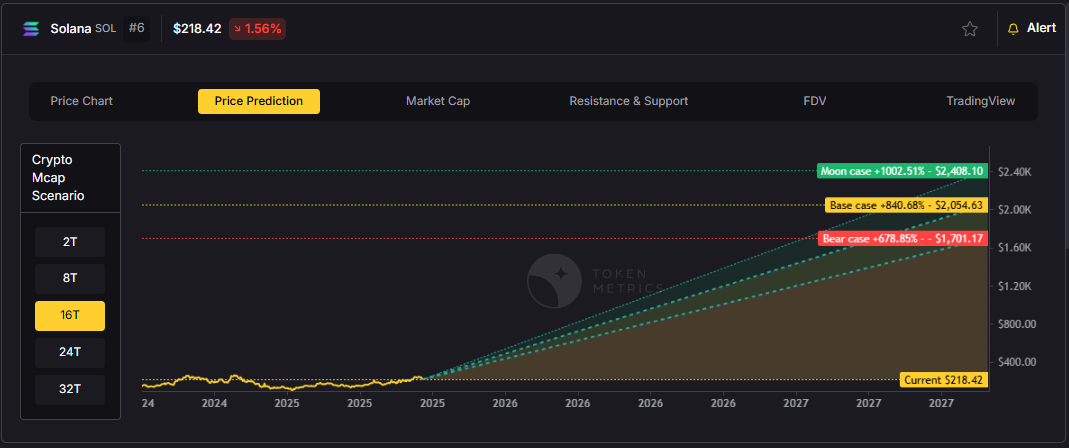
Why This Matters
Scenario planning beats guessing. Prices move, narratives change, but market-cap scenarios provide a common yardstick for upside/downside. With the price prediction API, you can give users transparent, parameterized ranges (Moon/Base/Bear) and the assumptions behind them—perfect for research, allocation, and position sizing.
Build investor trust. Pair scenario ranges with TM Grade (quality) and Quantmetrics (risk-adjusted performance) so users see both potential and risk. Add optional alerts when price approaches a scenario level to turn curiosity into action—without promising outcomes.
Where to Find
Find the cURL request for Price Predictions in the top right corner of the API Reference. Use it to easily pull up predictions for your project.
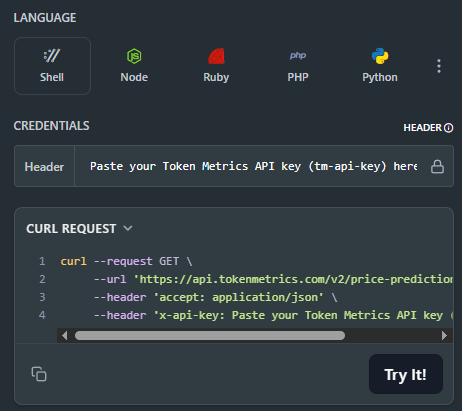
👉 Keep momentum: Get API Key • Run Hello-TM • Clone a Template
Live Demo & Templates
- Scenario Planner (Dashboard): Select a token, choose caps (e.g., $2T / $8T / $16T), and display Moon/Base/Bear ranges with tooltips.
- Portfolio Allocator: Pair scenario bands with Quantmetrics and TM Grade to justify position sizes and rebalances.
- Alert Bot (Discord/Telegram): Ping when price approaches a scenario level; link to the dashboard for context.
Fork a scenario planner or alerting template, plug in your key, and deploy. Confirm your environment by Running Hello-TM, and when you’re scaling users or need higher limits, review API plans.
How It Works (Under the Hood)
The Price Prediction endpoint maps market-cap scenarios to implied token prices, then categorizes them into Bear, Base, and Moon bands for readability. Your inputs can include a symbol and optional market caps; the response returns a scenario array you can plot or tabulate.
A common UX path is: Token selector → Scenario caps input → Prediction bands + context. For deeper insight, link to TM Grade (quality), Trading Signals (timing), and Support/Resistance (execution levels). This creates a complete plan–decide–act loop without overpromising outcomes.
Polling vs webhooks. Predictions don’t require sub-second updates; short-TTL caching and batched fetches work well for dashboards. If you build alerts (“price within 2% of Base scenario”), use a scheduled job and make notifications idempotent to avoid duplicates.
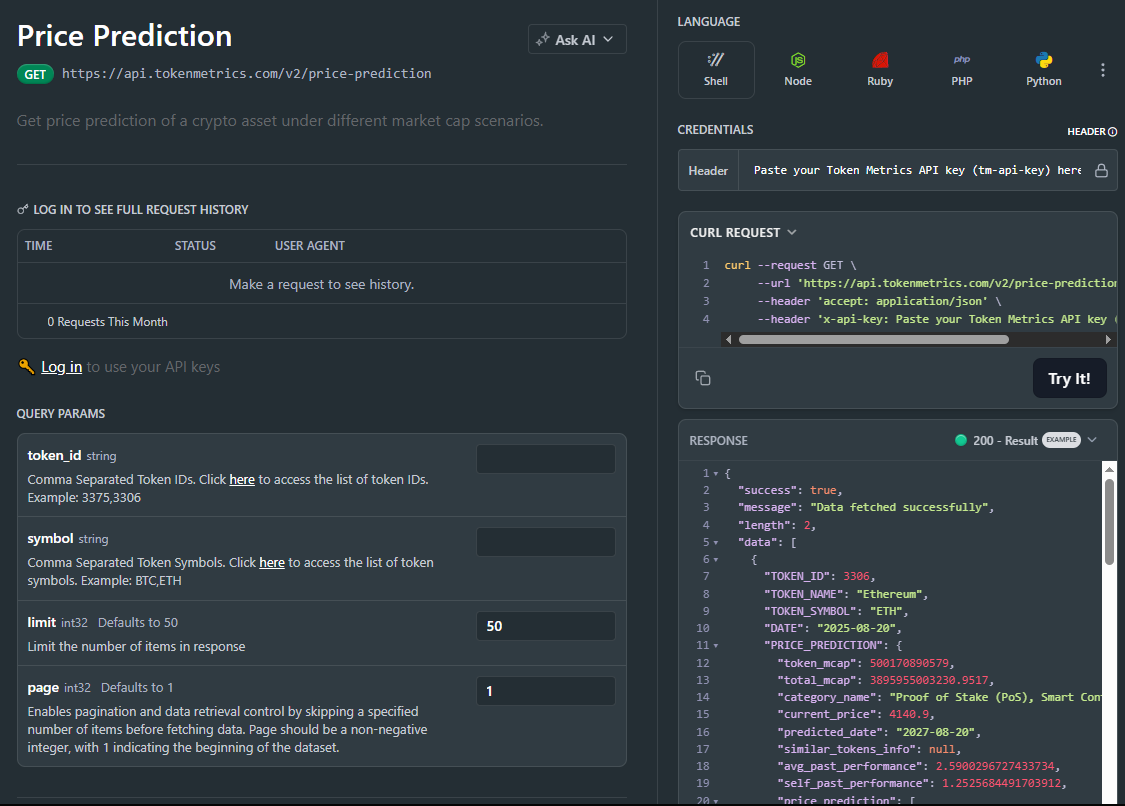
Production Checklist
- Rate limits: Understand your tier caps; add client throttling and worker queues.
- Retries & backoff: Exponential backoff with jitter for 429/5xx; capture request IDs.
- Idempotency: De-dup alerts and downstream actions (e.g., avoid repeat pings).
- Caching: Memory/Redis/KV with short TTLs; pre-warm popular symbols.
- Batching: Fetch multiple symbols per cycle; parallelize within rate limits.
- User controls: Expose caps (e.g., $2T/$8T/$16T) and save presets per user.
- Display clarity: Label Bear/Base/Moon and show the implied market cap next to each price.
- Compliance copy: Add a reminder that scenarios are not financial advice; historical outcomes don’t guarantee future results.
- Observability: Track p95/p99 latency and error rate; log alert outcomes.
- Security: Store API keys in secrets managers; rotate regularly.
Use Cases & Patterns
- Bot Builder (Headless): Size positions relative to scenario distance (smaller size near Moon, larger near Bear) while confirming timing with /v2/trading-signals.
- Dashboard Builder (Product): Add a Predictions tab on token pages; let users tweak caps and export a CSV of bands.
- Screener Maker (Lightweight Tools): Rank tokens by upside to Base or distance to Bear; add alert toggles for approach thresholds.
- PM/Allocator: Create policy rules like “increase weight when upside-to-Base > X% and TM Grade ≥ threshold.”
- Education/Content: Blog widgets showing scenario bands for featured tokens; link to your app’s detailed page.
Next Steps
- Get API Key — generate a key and start free.
- Run Hello-TM — verify your first successful call.
- Clone a Template — deploy a scenario planner or alerts bot today.
- Watch the demo: VIDEO_URL_HERE
- Compare plans: Scale confidently with API plans.
FAQs
1) What does the Price Prediction API return?
A JSON array of scenario objects for a symbol—each with a market cap and implied price, typically labeled Bear, Base, and Moon for clarity.
2) Can I set my own scenarios?
Yes, you can pass custom market caps (e.g., $2T, $8T, $16T) to reflect your thesis. Store presets per user or strategy for repeatability.
3) Is this financial advice? How accurate are these predictions?
No. These are scenario estimates based on your assumptions. They’re for planning and research, not guarantees. Always test, diversify, and manage risk.
4) How often should I refresh predictions?
Scenario bands typically don’t need real-time updates. Refresh on page load or at a reasonable cadence (e.g., hourly/daily), and cache results for speed.
5) Do you offer SDKs and examples?
REST is straightforward—see the JavaScript and Python snippets above. The docs include quickstarts, Postman collections, and templates—start with Run Hello-TM.
6) How do I integrate predictions with execution?
Pair predictions with TM Grade (quality), Trading Signals (timing), and Support/Resistance (SL/TP). Alert when price nears a scenario and route to your broker logic (paper-trade first).
7) Pricing, limits, and SLAs?
Start free and scale up as you grow. See API plans for rate limits and enterprise SLA options.
Create Your Free Token Metrics Account

.png)




%201.svg)
%201.svg)


%201.svg)



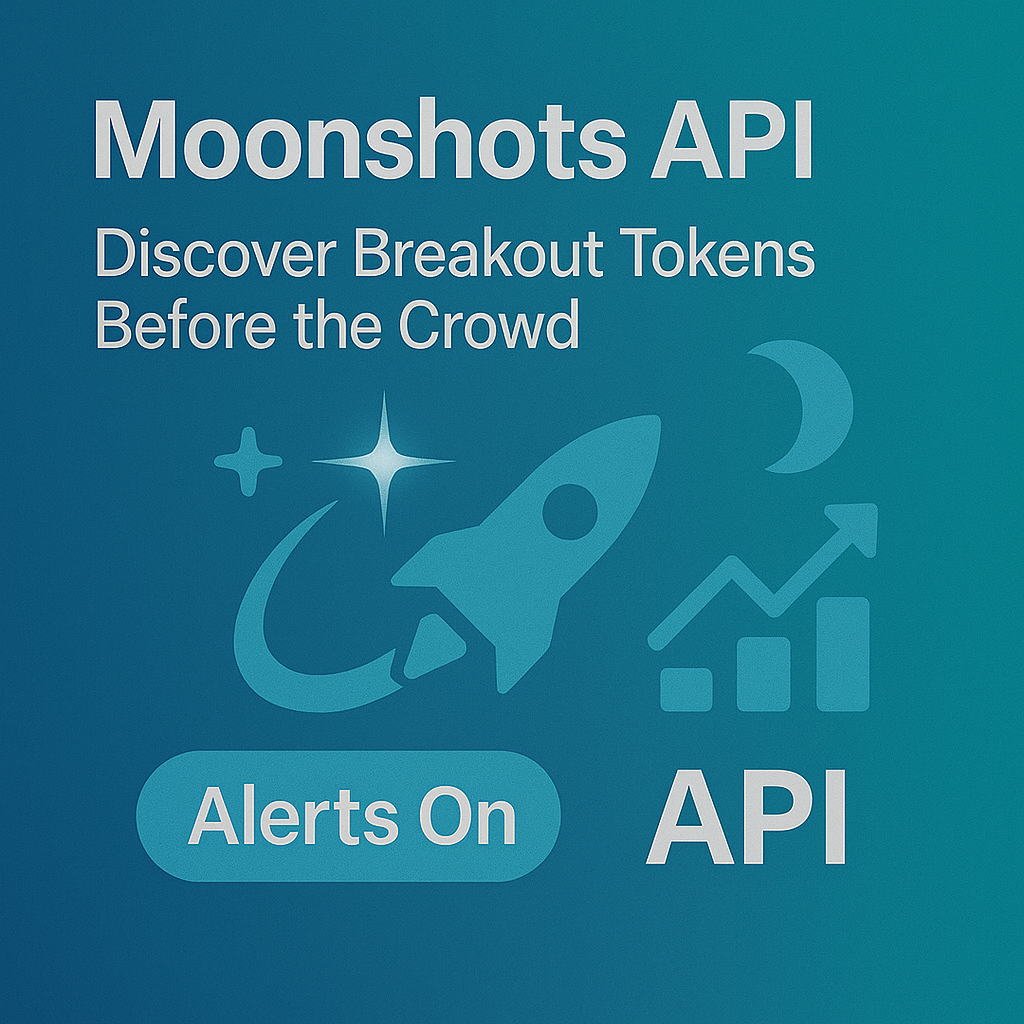
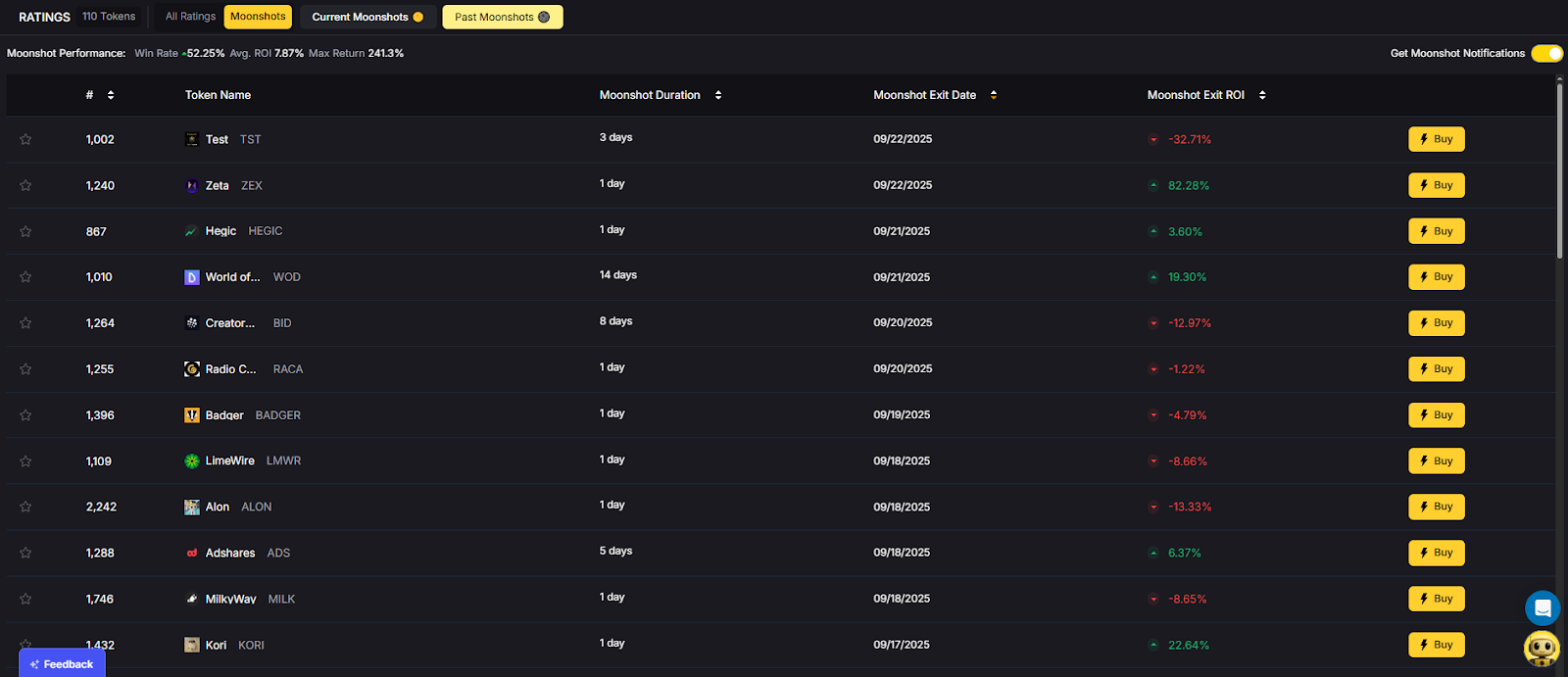
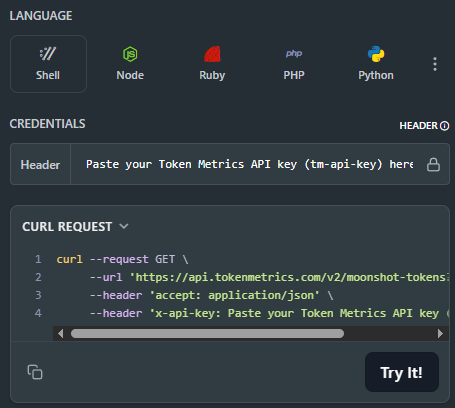
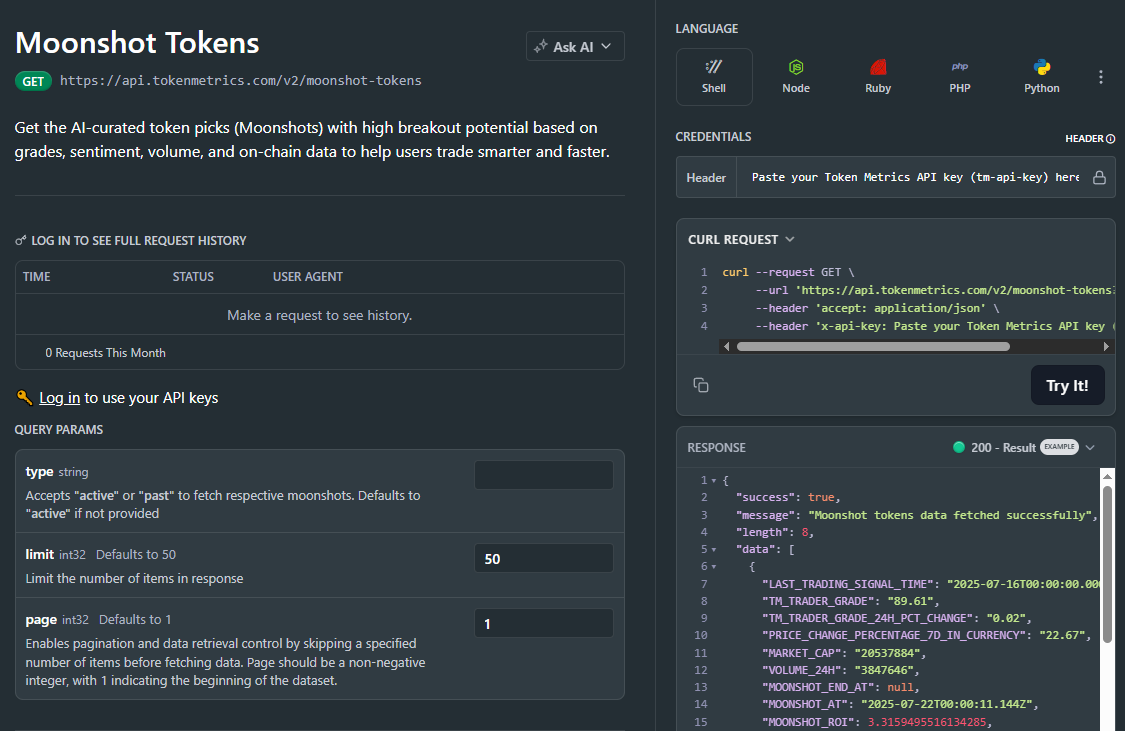
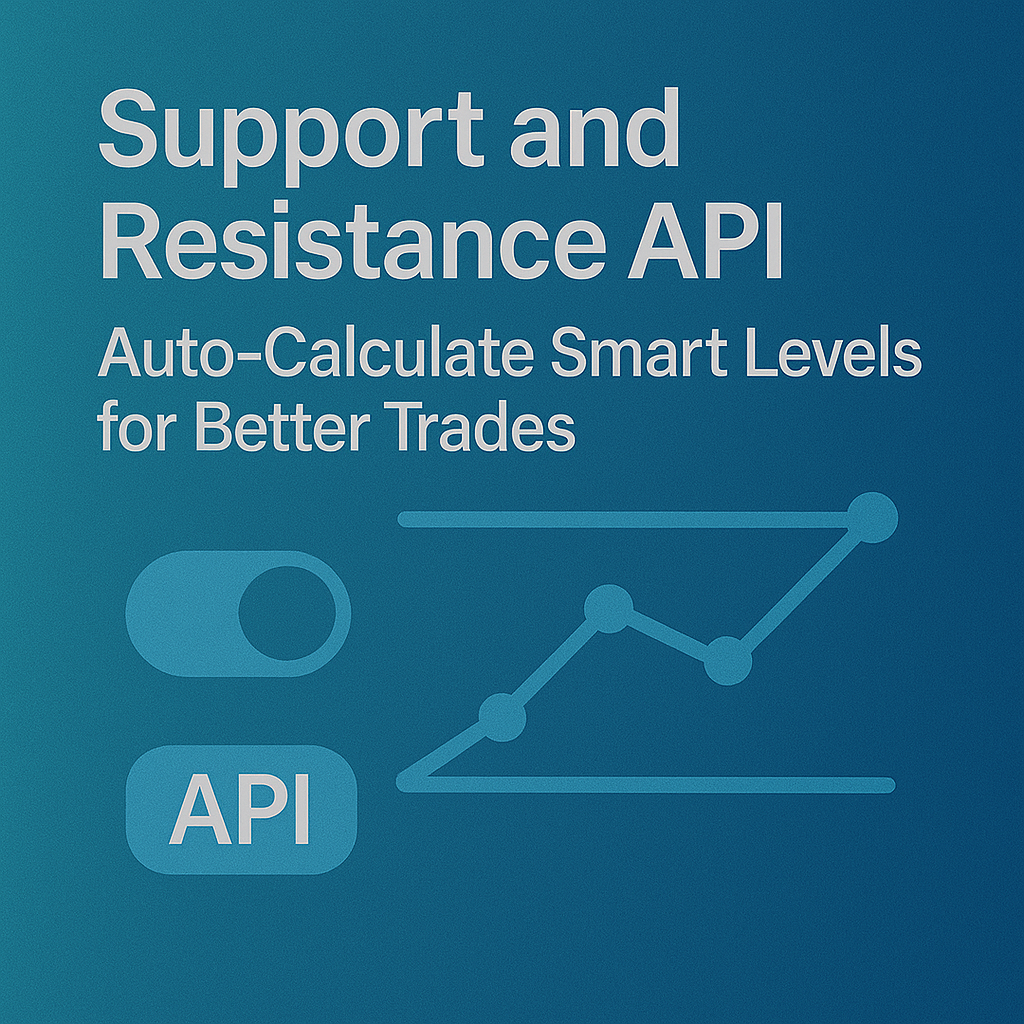
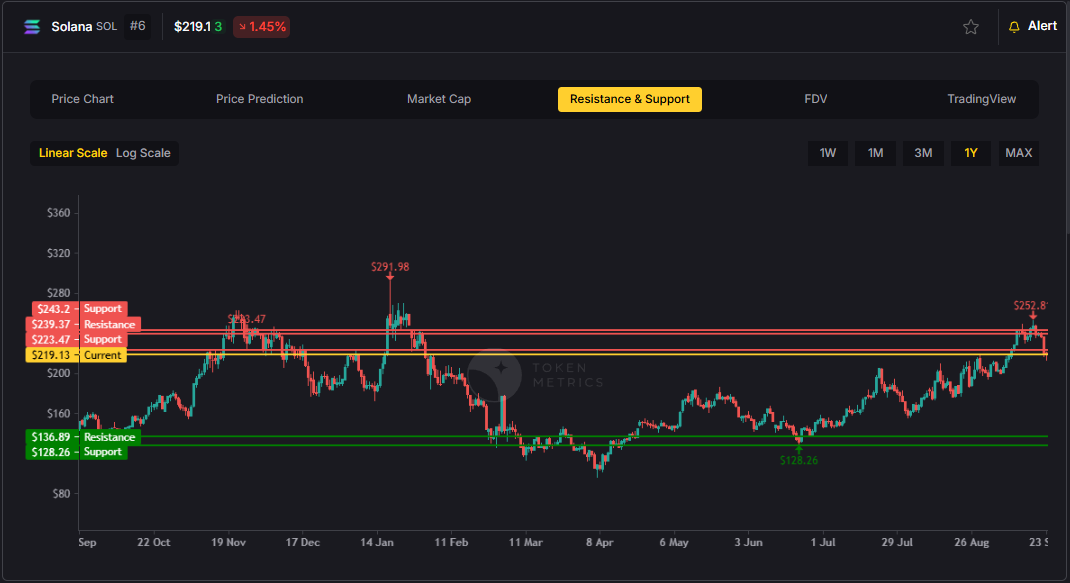
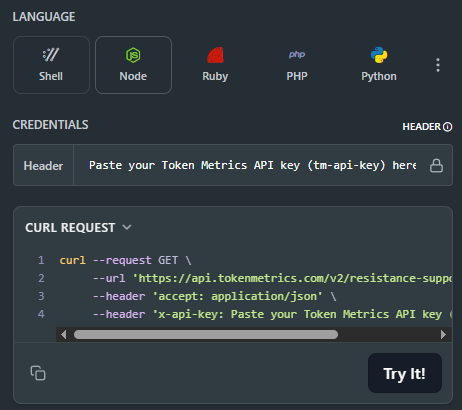
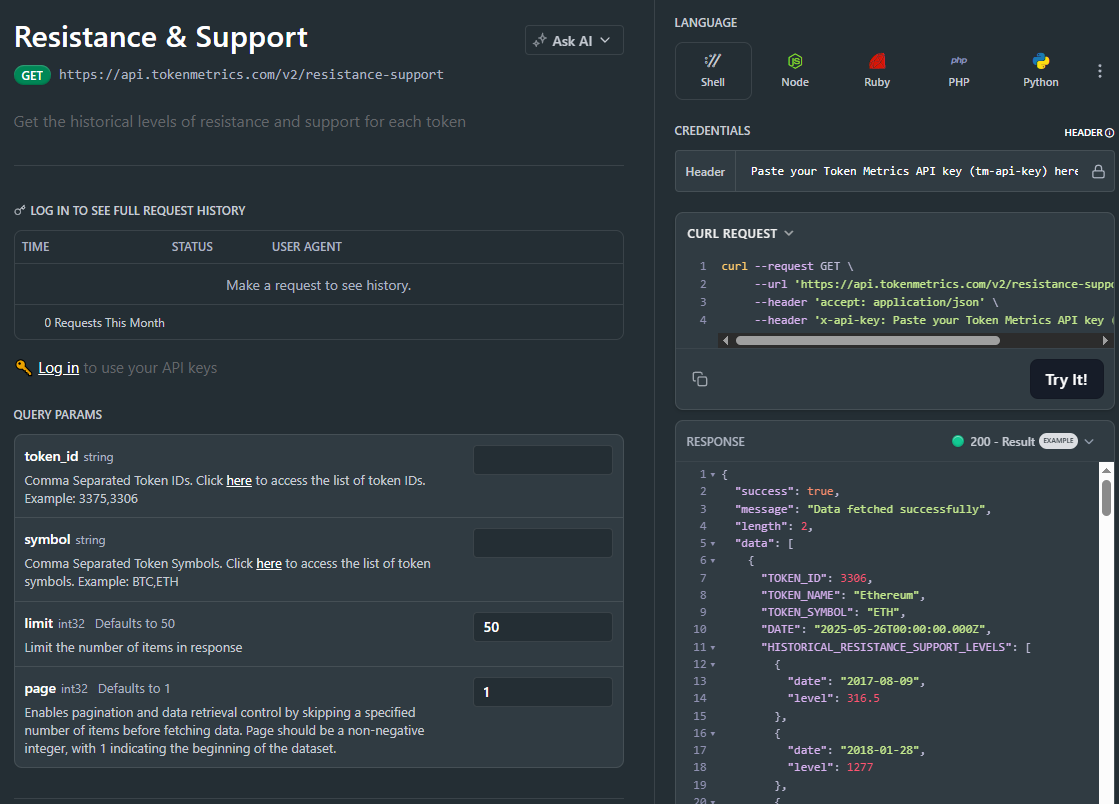




.svg)




.png)